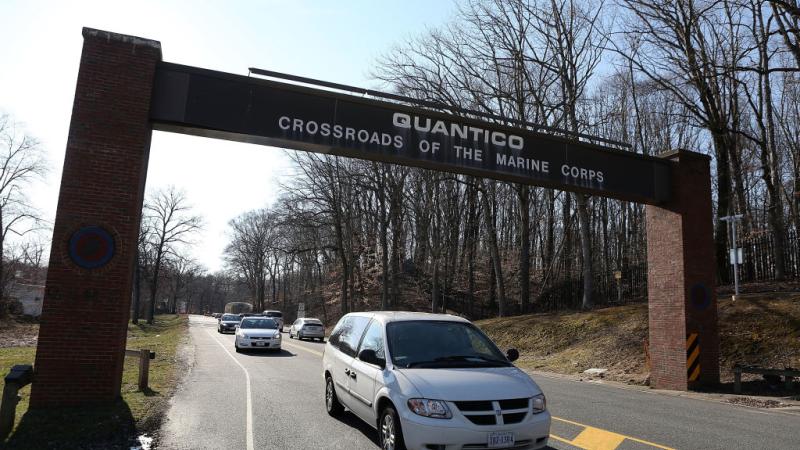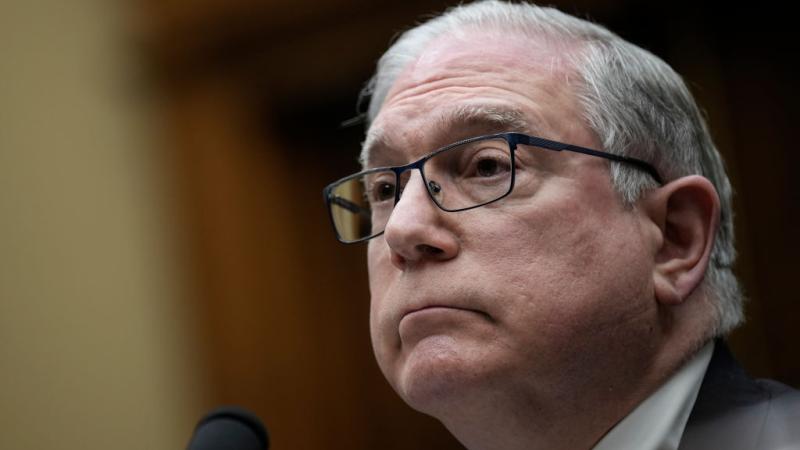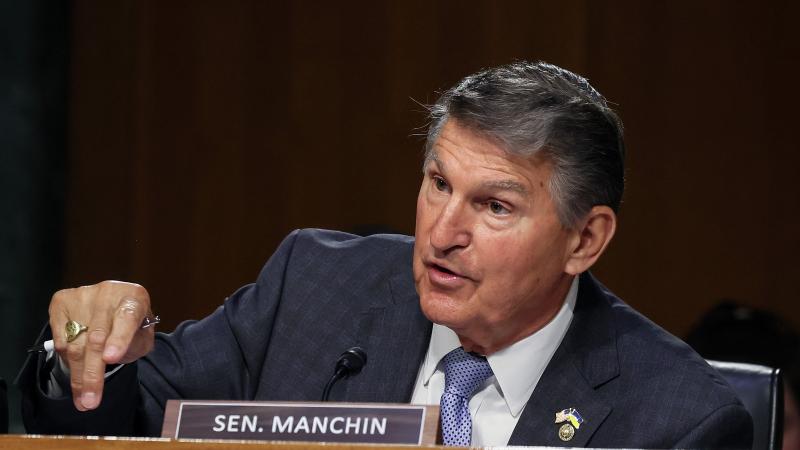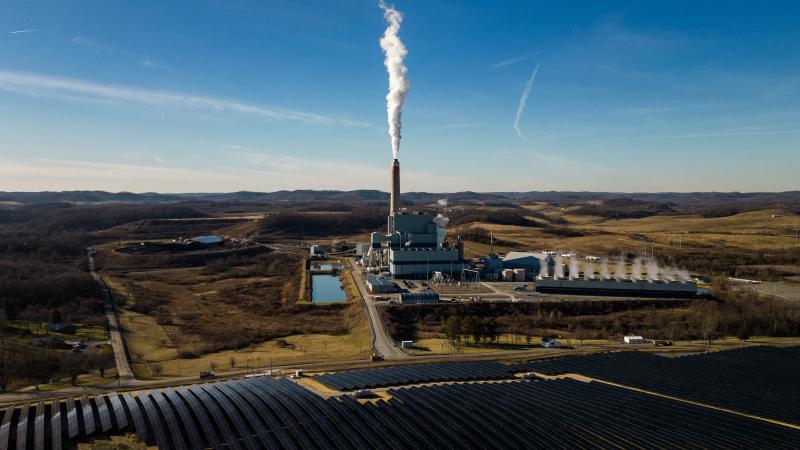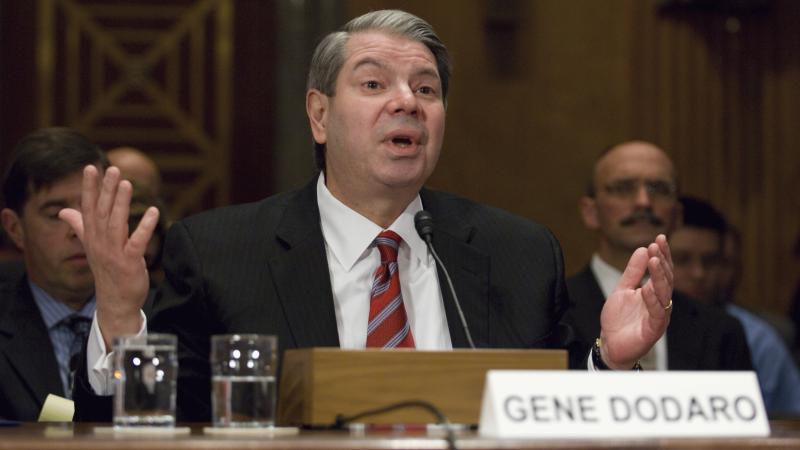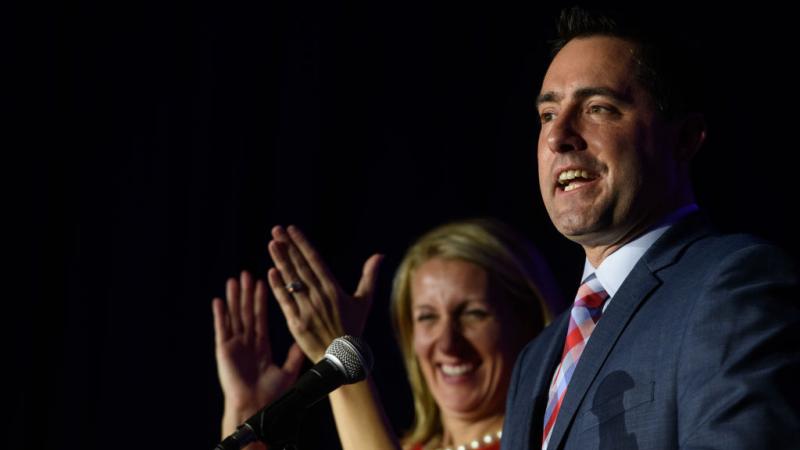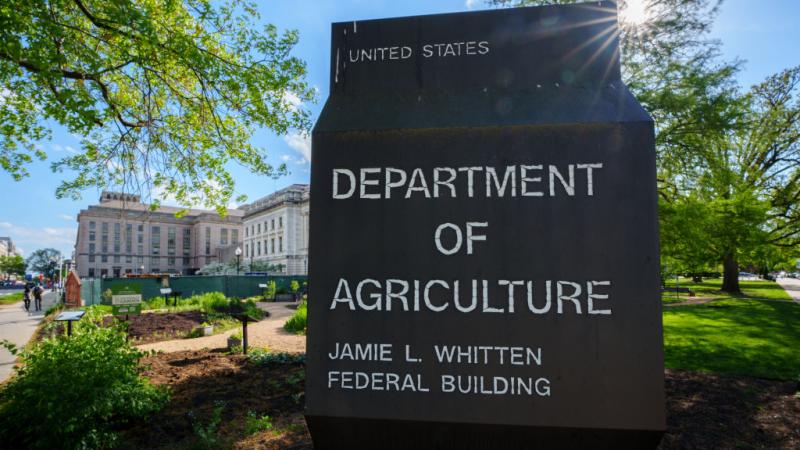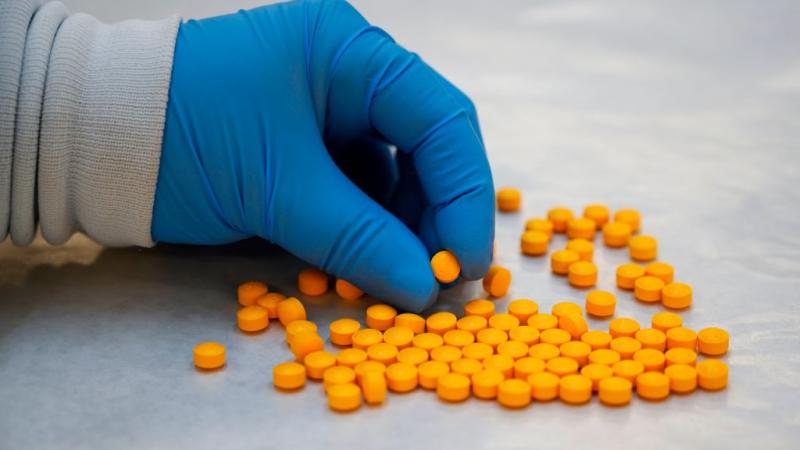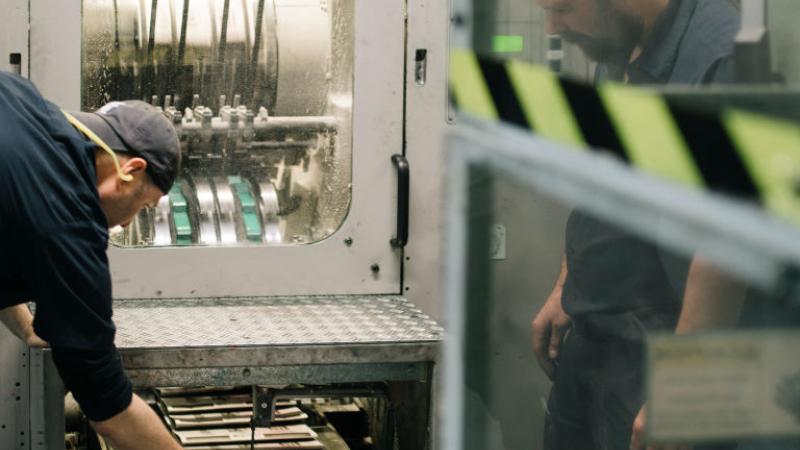'Low' risk and tests for all? Botched COVID response hangs over feds' bird-flu plans
"After the Covid debacle, it is not surprising that people refuse to collaborate with CDC," says Great Barrington Declaration co-author on dairy farms resisting CDC visits. FDA gives mixed messages on H5N1 threat to humans.
A shadowy virus is spreading with unknown frequency and risk to humans. The Centers for Disease Control and Prevention wants to distribute rapid tests nationwide so consumers can see if they are infected.
It's not 2020, but the deep distrust engendered by federal public health agencies' sometimes botched and seesawing response to SARS-CoV-2 is hanging over their response to H5N1, more commonly known as bird flu.
Dairy farms are resisting cooperation with the CDC to track and contain the spread of the flu in their cows, and state and local leaders are chafing at what they perceive as public health agencies marginalizing the Agriculture Department's experts, Politico reported early Monday.
Texas said none of its dairy farms was willing to participate in CDC epidemiological field studies, and a potential USDA commissioner in a second Trump administration, Texas Agriculture Commissioner Sid Miller, said the feds need to "back off."
Brown University epidemiologist Jennifer Nuzzo, a vocal critic of the CDC's one-size-fits-all approach to COVID-19 boosters, said the resistance wasn't surprising because of federalism and lack of incentives for farms to play ball with the CDC.
While Politico speculated that farms fear being "identified publicly as potential hotspots for the virus" or the feds scrutinizing workers who illegally immigrated, epidemiologist Martin Kulldorff has another theory for the resistance.
"After the Covid debacle, it is not surprising that people refuse to collaborate with CDC," the co-author of the anti-lockdown Great Barrington Declaration, a repeat target of social media censorship and plaintiff in a First Amendment lawsuit against the feds the Supreme Court heard this spring, told Just the News.
Kulldorff marveled in a March essay about the CDC kicking him off a vaccine safety panel for being "too pro-vaccine" – criticizing its suspension of the Johnson & Johnson COVID vaccine due to blood clots in a few women under age 50 – then Harvard fired him for refusing a COVID vaccine, rejecting his request for a medical exemption on the basis of a risky "immune deficiency" and ignoring his natural immunity from infection.
"Trust is a two-way street," Kulldorff wrote in an email. "To slowly regain trust, CDC must always be open and honest, acknowledge its mistakes during the pandemic and focus on voluntary interventions rather than mandates."
The feds sparked fears that cooperation may be less than voluntary on H5N1, based on what state agriculture officials told Politico they suggested during a recent conference call.
Senior CDC officials including Principal Deputy Director Nirav Shah, once a defendant in a state COVID-19 vaccine lawsuit who claimed last fall that masks are a "great way" to protect others from infection, reportedly floated on-the-ground federal surveillance of farmworkers.
Hours after the Politico report, the agency released a "readout" – actually a short summary – of Shah's Monday meeting with "state health officials, public health emergency preparedness directors, state epidemiologists, and state public health veterinarians" as well public health partners.
He asked state health departments to work with agriculture departments and farmworker organizations to "coordinate and facilitate [personal protective equipment] distributions," prioritizing distribution to farms whose cow herds have a documented bird-flu infection.
The summary reiterates the CDC's assessment from a May 3 update that bird flu poses a "low" risk to the general public, but does not mention a disclosure that caught attention last week: The CDC is working with commercial diagnostic test makers and clinical partners to make a test "widely available for consumers."
That update hedged by saying the CDC simply wants to "make progress toward the goal" of having tests available to everyone, regardless of their proximity to infected animals or lack of evidence that H5N1 can easily spread among humans.
Asked whether it faced similar skepticism from agricultural interests before COVID, how it's changed its approach since COVID to avoid creating the same flash points and why it's fast-tracking rapid tests for H5N1 with so little data, CDC spokesperson Rosa Norman gave Just the News a detailed statement.
Its role is to "provide guidance and support to our state public health partners" and the CDC is "in the process of building new relationships and the trust needed to have uniform access to developments" in the dairy industry, "a new sector within U.S. agriculture exposed to this virus ... across every impacted state and to provide support where and when needed," the agency said.
"It is imperative that we curtail the opportunities for A(H5N1) viruses to spread further and evolve to pose a greater risk to the public’s health. Protecting public health, and in this situation in particular, the health of the people at greatest risk of infection, is a vital priority, and testing is critical in the long term to stay ahead of avian flu."
It has more than two decades of experience "preparing for avian flu outbreaks" and "robust monitoring capabilities of other outbreaks," but so far "has not detected any concerning activity linked to milk" or "identified any unusual or concerning patterns at the national, the state, or local levels."
The statement floats the possibility of giving manufacturers "the building blocks to make a vaccine if needed," which are "two existing" candidate vaccine viruses that initial genetic analysis suggest "would offer protection against the virus that was isolated."
The CDC has "multilingual and multidisciplinary epidemiological field teams ready to deploy to support on-site studies" but will only send them "when requested." The risk to the general public "remains low" but it will "adapt our response as needed."
Only one cow-human case has been documented – a Texas dairy worker with "eye redness," treated with an "antiviral drug for flu" – and no more in the month since the CDC announced the case, the agency confirmed in the May 3 update. The only prior human infection was from a poultry worker two years earlier.
Life sciences news site STAT reported in late April that an Ohio State University veterinary epidemiologist found dead H5N1 viral RNA in 58 samples from 150 commercial milk products collected on his "road trip" of processing plants in 10 Midwestern states.
Animals appear to be at greater risk, with half the cats on a Texas farm who drank contaminated raw milk dying within two days, the CDC said last week. The Nature journal Communications Biology elaborated on a fatal dolphin infection from 2022 in a paper last month.
Nature reported last month the "highly pathogenic" bird flu has probably been spreading in cows since late December or January, based on "swift analyses" of USDA genomic data made available April 21 – a month after the feds announced the viral jump to cows.
Even as the Food and Drug Administration assured Americans last week that pasteurization has "inactivat[ed]" H5N1 in conventional dairy products it tested – giving it another excuse to denounce its foe of many years, raw milk – the FDA still gives mixed messages.
It referred to the infection as "highly pathogenic avian flu," calling it "highly contagious and often deadly" but only in birds, "not necessarily in humans," who have suffered "sporadic" infections.
The feds' response to H5N1 raises the same question as its response to COVID: how officials can "stop the spread" of a virus that circulated for several months undetected.
Stanford Medical School epidemiologist John Ioannidis, a pioneer of meta-research, wrote in STAT in March 2020 the number of "influenza-like illness" deaths at the time would suggest "at most" the flu season was a "bit worse than average," if SARS-CoV-2 hadn't been identified.
Anthony Fauci, who led the National Institute of Allergy and Infectious Diseases for four decades, has a history of hyping disease "nightmares," from widespread heterosexual transmission of HIV to "massive person-to-person" spread of H5N1 in the George W. Bush administration and a widespread Zika U.S. outbreak in President Obama's final year.
After the CDC told private labs to stop developing their own COVID tests, even threatening a Seattle doctor who uncovered an early outbreak, the agency's self-designed kits turned out to be wholly unreliable, which a belated review by its scientists blamed on unspecified contamination and a design flaw.
It hyped positives from PCR tests that can deliver contradictory results based on the sensitivity threshold of testing – which drastically overstated COVID cases at least in early months – while then-Director Rochelle Walensky admitted in late 2021 that PCR tests can register positives for 12 weeks, long after infections have resolved.
Not daunted by the feds' track record on COVID, their cheerleaders are already making clear they'll blame farms and state regulators if bird flu spreads widely.
Center for Biological Diversity food campaigner Jennifer Molidor, who predicted the incoming Trump administration would launch a "full-scale assault on public lands," denounced the "good ol’ boys network of ranchers regulating ranching" for making another pandemic more likely.
Vox editor and former factory farming reporter Marina Bolotnikova accused the federally subsidized dairy industry of displaying "the chutzpah to think it can kick out public health authorities & risk inflicting a pandemic on us."
The Facts Inside Our Reporter's Notebook
Videos
Links
- Politico reported early Monday
- vocal critic of the CDC's one-size-fits-all approach
- repeat target of social media censorship
- First Amendment lawsuit against the feds the Supreme Court heard this spring
- Kulldorff marveled in a March essay
- state COVID-19 vaccine lawsuit
- claimed last fall that masks are a "great way"
- the agency released a "readout" â actually a short summary â of Shah's Monday meeting
- May 3 update
- Texas dairy worker with "eye redness," treated with an "antiviral drug for flu
- only prior human infection was from a poultry worker
- STAT reported in late April
- drank contaminated raw milk dying within two days
- fatal dolphin infection from 2022
- Nature reported last month
- pasteurization has "inactivat[ed]" H5N1
- denounce its foe of many years, raw milk
- It referred to the infection as "highly pathogenic avian flu,"
- John Ioannidis, a pioneer of meta-research, wrote in STAT in March 2020
- history of hyping disease "nightmares,"
- threatening a Seattle doctor who uncovered an early outbreak
- belated review by its scientists blamed
- contradictory results based on the sensitivity threshold
- drastically overstated COVID cases at least in early months
- PCR tests can register positives for 12 weeks
- Jennifer Molidor, who predicted the incoming Trump administration
- "good olâ boys network of ranchers regulating ranching"
- Marina Bolotnikova accused

